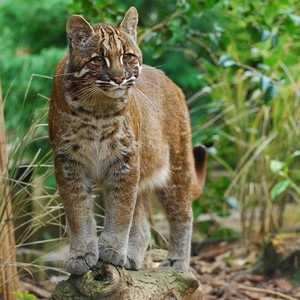In the morning, travel out the the Xieng Khouan Buddha Park. Afterwards, begin the journey back to Vientiane, stopping en route at Mai Savanh Lao and the Lao Disables Women Development Centre. Later, visit Wat Sisaket and Ho Pha Keo, before learning of the Secret War at the COPE Visitor Centre. Overnight stay in Vientiane.
Overnight in Salana Boutique Hotel , Vientiane
Meal plan: Breakfast
Xieng Khouan, meaning spirit city, is a sculpture park that contains hundreds of Hindu and Buddhist statues. This Buddha Park was created in 1958 by Luang Pu - a priest who integrated Hinduism and Buddhism. The ornate statues within the park are each very unique and take the form of humans, gods, animals and demons.
Mai Savanh Lao, meaning 'the silk from paradise, is a fair trade silk and tea company. The region is famed for its silk, and here, visitors can learn the process of silk weaving - from silk form, to rearing and the final product.
The Lao Disabled Women's Development Centre is a non-profit organisation, whose purpose is to offer training, employment, support and community for women with disabilities. Visitors can tour the centre and choose to partake in a handicraft class.
Wat Sisaket is a Buddhist temple in Vientiane. It was built between 1819 and 1824 by Chao Anou, on the orders of King Anouvong, and is thought to be the oldest surviving temple within the city. It is made up of a number of towers, including a drum tower, along with a cloister wall that displays over 2,000 Buddha images, and Jakata murals - which depict stories of the Buddha's past lives.
COPE, stands for 'Cooperative Orthotic and Prosthetic Enterprise'. It was founded in 1977 with the aim of providing individuals with physical disabilities access to a free rehabilitation service. Together with assistance from the government, COPE has been fundraising and producing orthotic and prosthetic devices, along with providing the rehabilitation and therapy needed to support local individuals. Many of whom, who live in remote and rural locations, are reached through COPE's use of satellite rehabilitation services. In 2008, COPE opened its Visitor Centre, where visitors can learn about disability in Laos and of the work that is being done by the charity.
Located in Vientiane, the majestic Ho Pha Keo temple was originally built in 1565 as a royal chapel for the celebrated statue of the Emerald Buddha after it was taken from North Thailand in 1551. The statue remained in the temple for over 200 years until it was recaptured by the Thais in 1778 and returned to Bangkok, where it now sits in the Grand Palace. Ho Pha Keo has been rebuilt many times, first destroyed between 1828 and 1829 by Siamese armies before being rebuilt in 1936, and restored again in 1942 and 1993. Today it is used as a museum, exhibiting religious art, Khmer stone carvings and numerous Buddha statues. A 2000-year-old stone jar from Plain of Jars can also be found in the manicured garden.





















